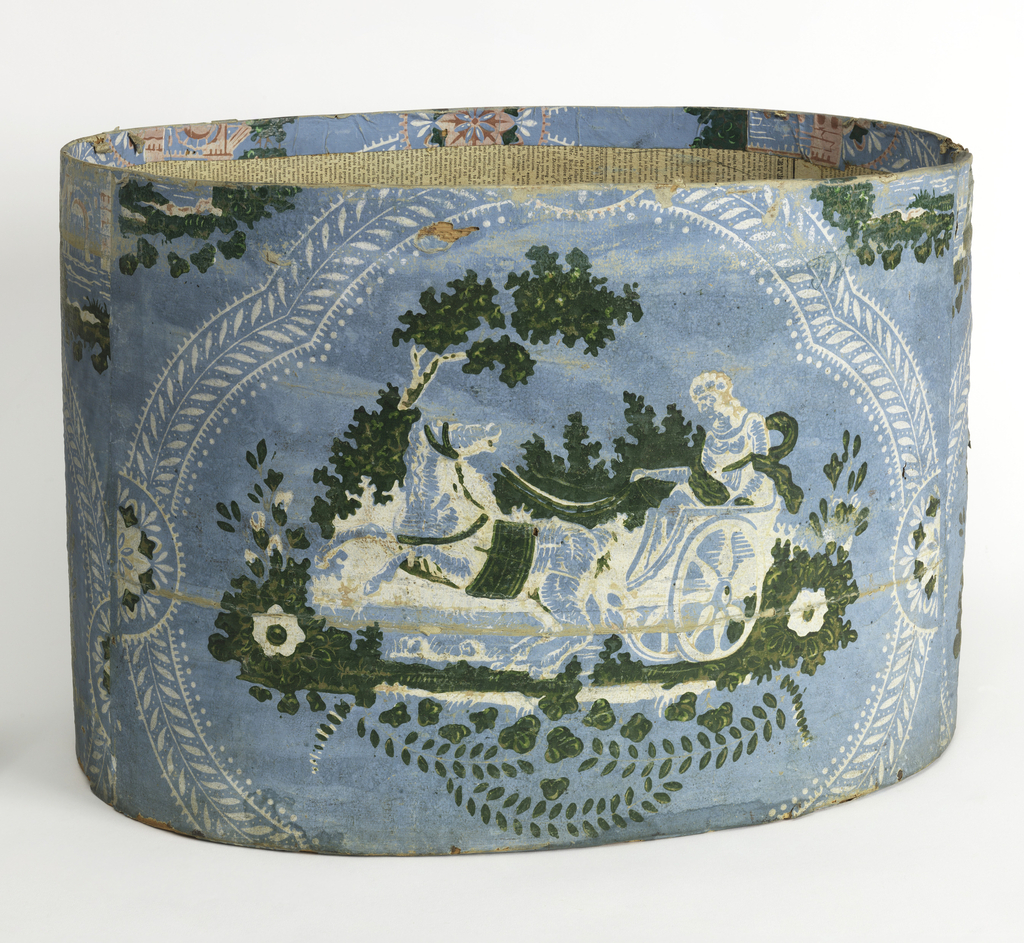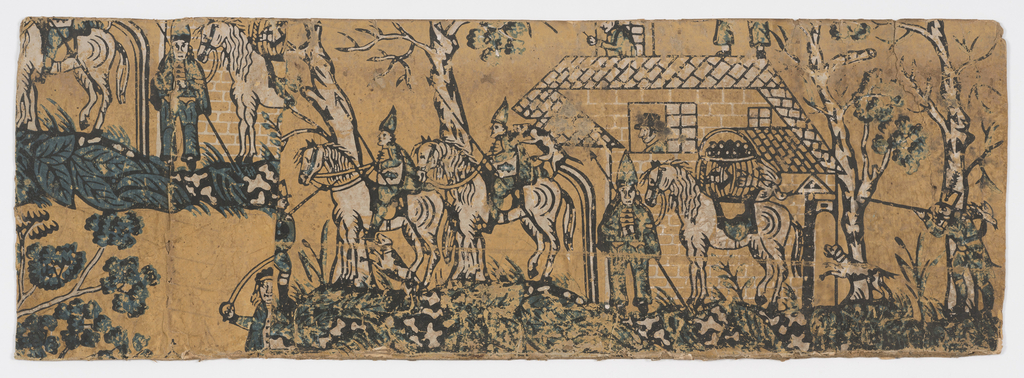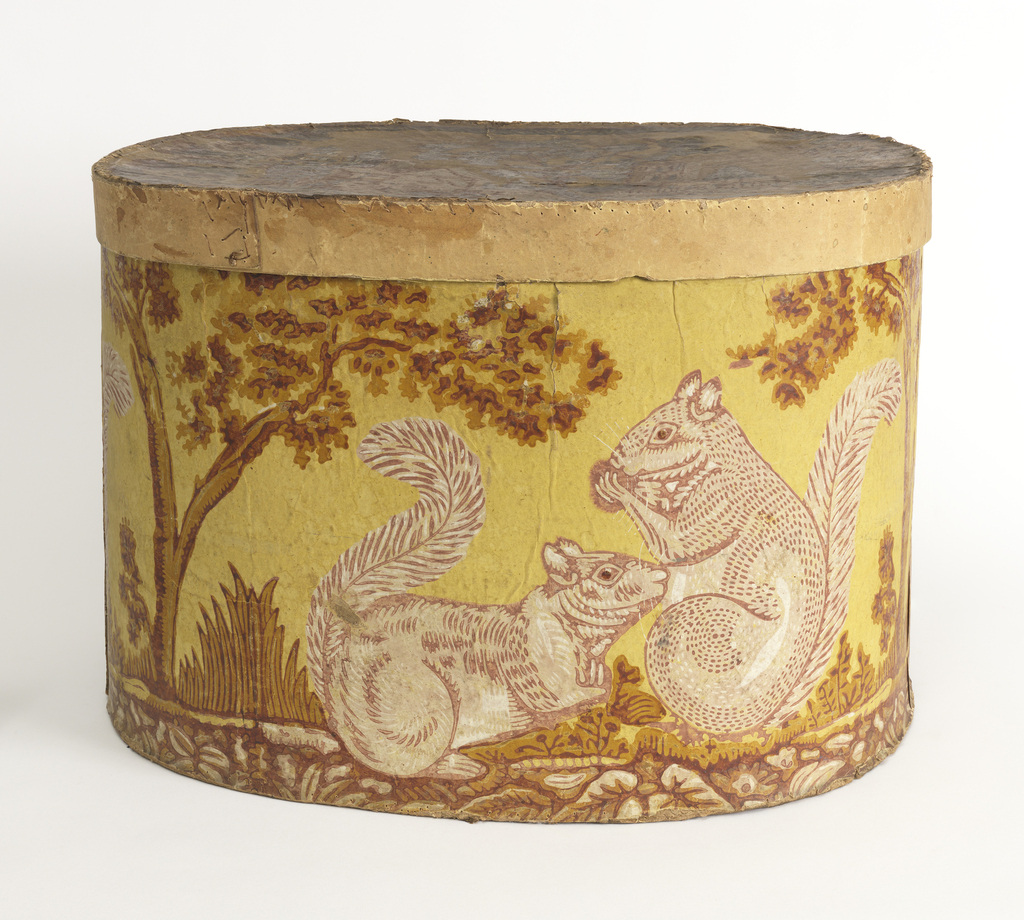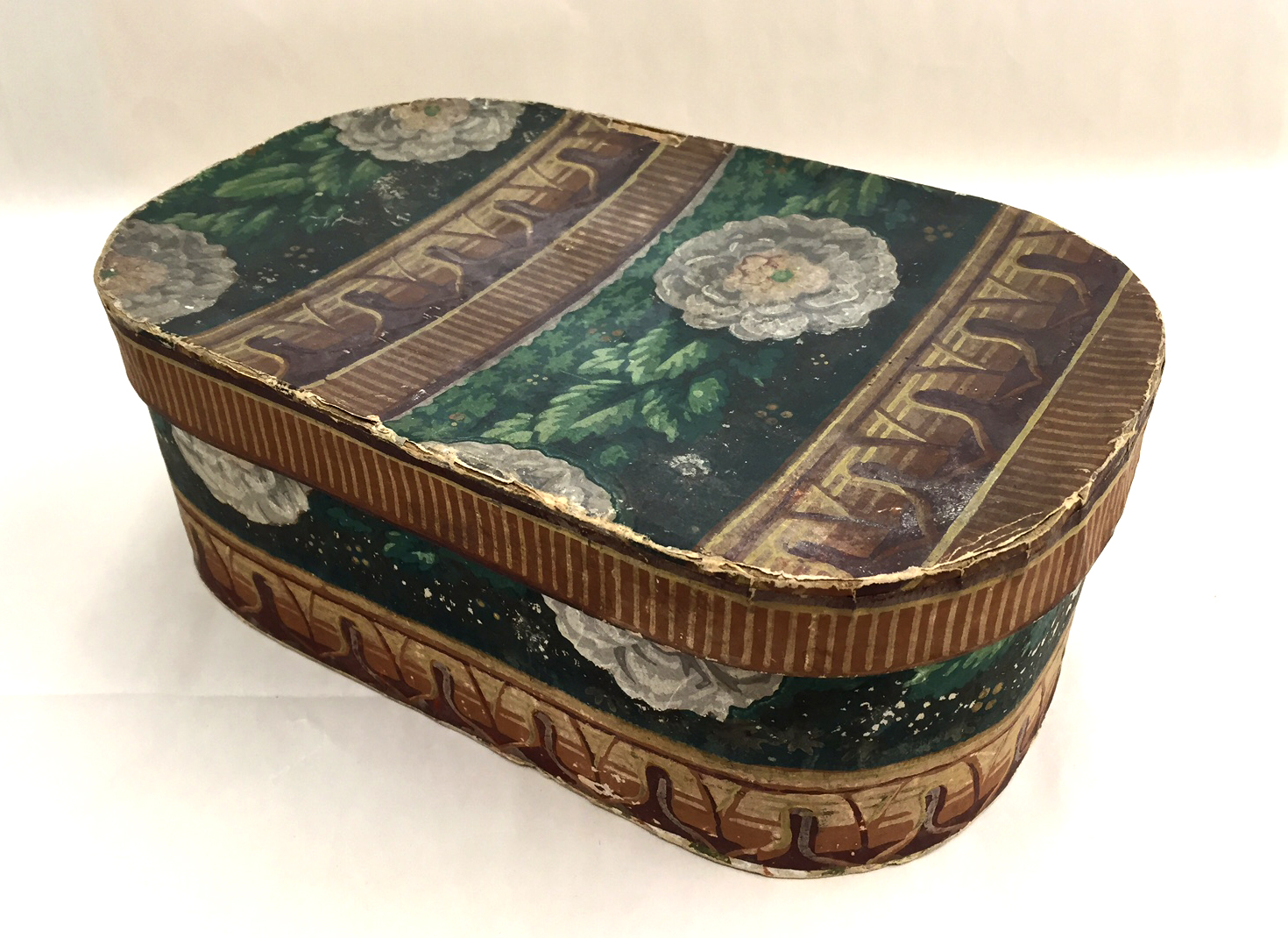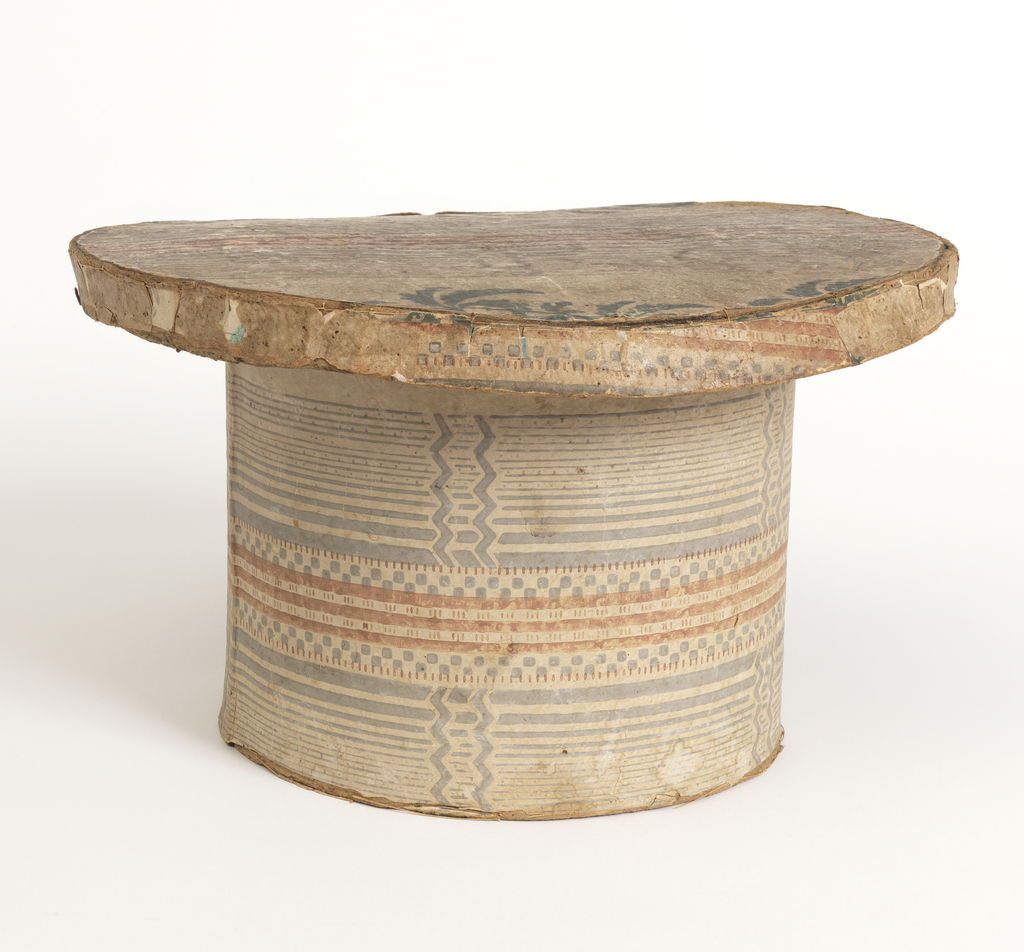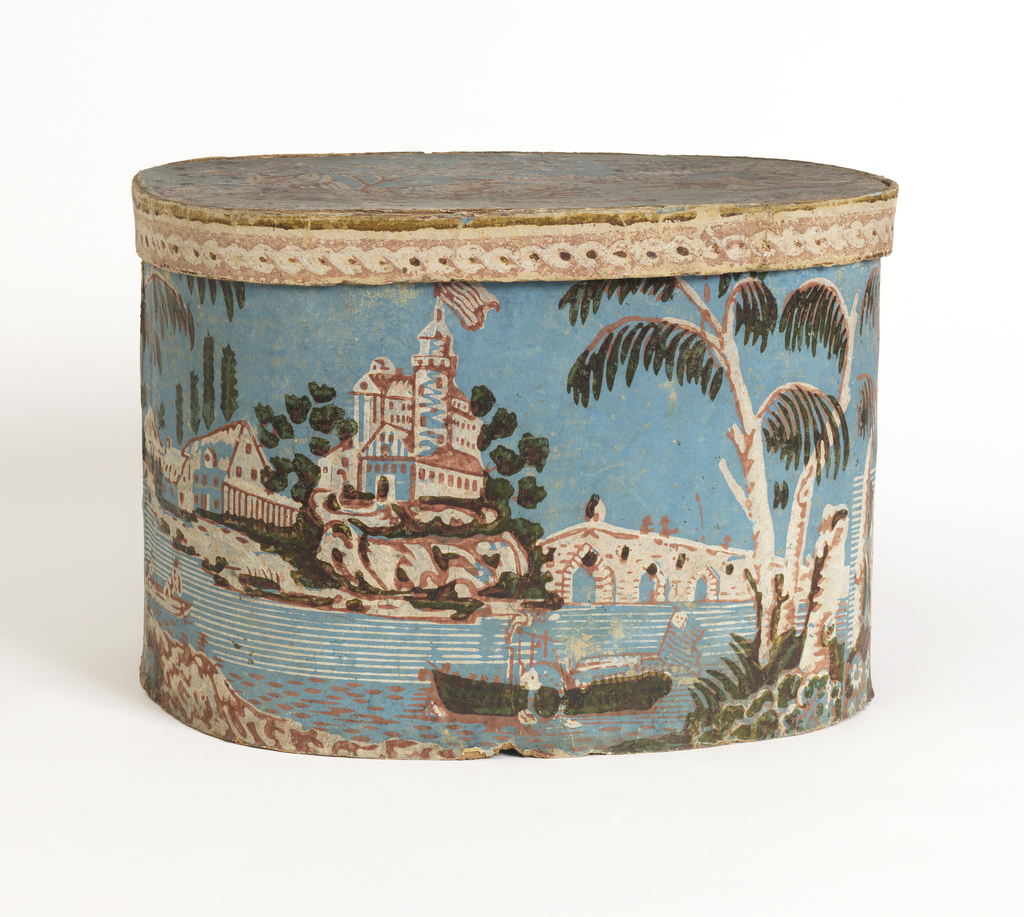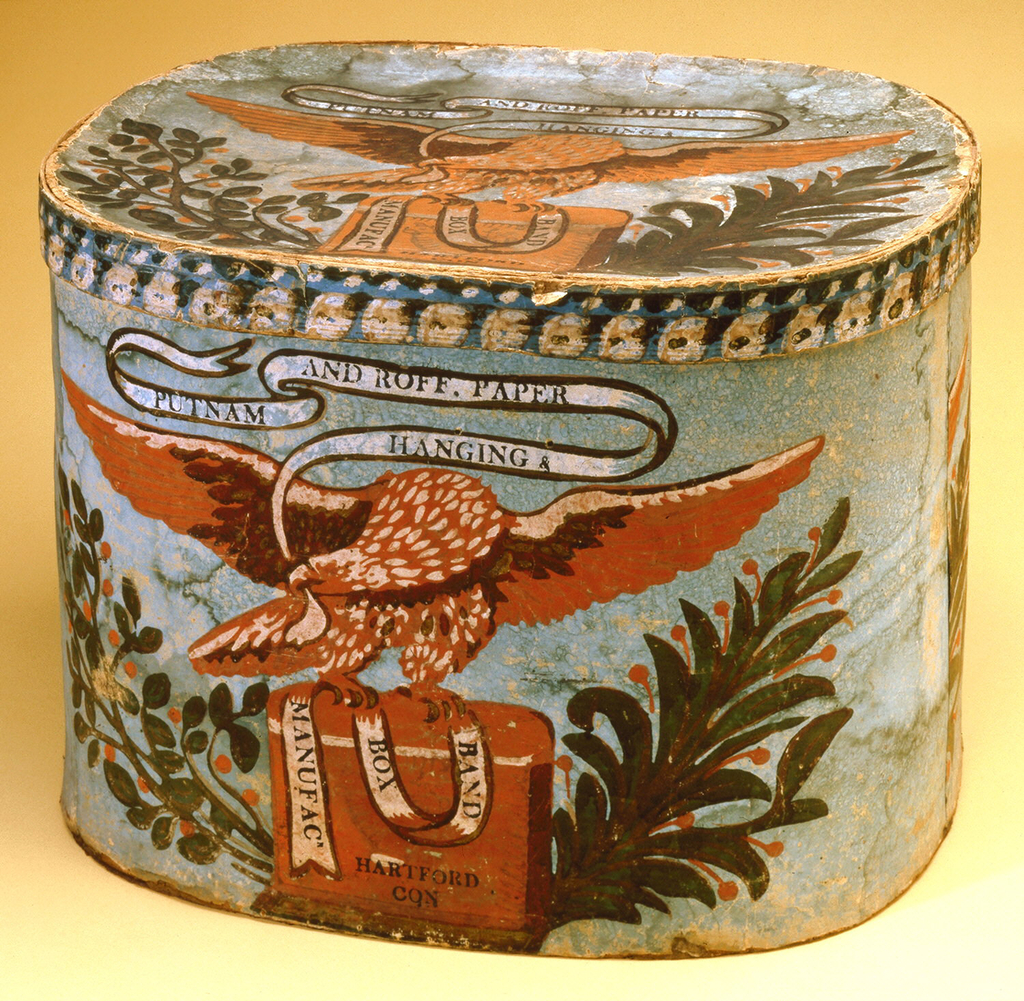In celebration of Women’s History Month, March Object of the Day posts highlight women designers in the collection. Blogging today about an early women designer and craftsperson, Hannah Davis. Hannah is known for creating some of the most finely constructed bandboxes in the business. She entered the field in 1818 at the age of 34....
I was scrolling through some images and came across this bandbox fragment. This appears to be about half of the side panel of a box which has been flattened and probably framed at some point. This is a specially printed bandbox paper illustrating a battle or conflict of some sort, though I’m having trouble identifying...
If you’ve been reading Object of the Day blogs you have probably read past articles on bandboxes. Popular in the United States from around 1800-1850, these were made of pasteboard and covered with either a wallpaper or a specially printed bandbox paper. The original intent was to store and transport men’s collar bands, but soon...
In last month’s Cooper Hewitt Short Story, we buttoned up with a rousing exploration of the history of the button as illustrated by Cooper Hewitt’s expansive collection. This month, we delve into the uniquely Cooper Hewitt collection of historical and contemporary wallcoverings. Greg Herringshaw, the museum’s curator of wallcoverings, outlines three key areas collected by...
Many of you have probably read my earlier blogs on bandboxes so I won’t elaborate on their purpose. They were originally designed to store and transport men’s removable collar bands, hence the name, but they were also used for hats and as general carry-all’s. Many boxes in the 1830s and 40s commemorated historic events of...
Bandboxes, a decorative yet practical item of an earlier time, were originally used as receptacles for holding men’s neckbands in the early 17th century. Although they continued to hold that purpose heading into the 19th century, women would soon adapt them to carry their personal items and accessories. Between the years 1820 and 1845, the...
The founders of the Cooper Hewitt collection, Eleanor, Sarah and Amelia Hewitt, had a passion for bandboxes and over the course of their tenure had amassed nearly 100 boxes, creating one of the larger collections of such boxes in the United States. The majority of the boxes in the collection are about hat box size,...
One of the earliest areas where you see a social influence on wallpaper are designs with innovations in mobility. As people began exploring America’s scenic wonders in the 1820s, many Americans satisfied their wanderlust with river excursions, and the Hudson valley became a major destination. It was around this time manufacturers started printing designs that...
Bandboxes, rendered completely obsolete in today’s world of attached collars, were once a necessary possession for any man who liked to wear shirts. This patriotic example dates c. 1821- 1824, and it has lived within the collections of the Cooper Hewitt and its predecessors since 1913. The box is constructed of pasteboard covered in block-printed...
